No products in the cart.
NEWS
Best Fruit Trees to Plant in Your Front Yard for Beauty and Harvest
Transform your front yard into a welcoming and productive space by planting beautiful fruit trees. While many trees enhance curb appeal, choosing the best fruit trees for your front yard requires careful consideration. Standard fruit trees can grow quite large, potentially blocking views, creating messy fruit drop, and overshadowing your home and other landscaping. The key is to select varieties that stay manageable in size, provide aesthetic value, and yield delicious fruit without becoming an obstacle. These smaller trees allow for easier harvesting and integrate seamlessly into the garden display. Your selection will also depend on local factors like your hardiness zone, available light, and soil conditions.
Here, we explore some excellent fruit tree options ideal for front yard planting. Tree breeders are continually developing new, compact varieties, so depending on your region, you might also consider less common options like a jujube, persimmon, or even certain citrus varieties.
Apple Trees: A Popular Front Yard Choice
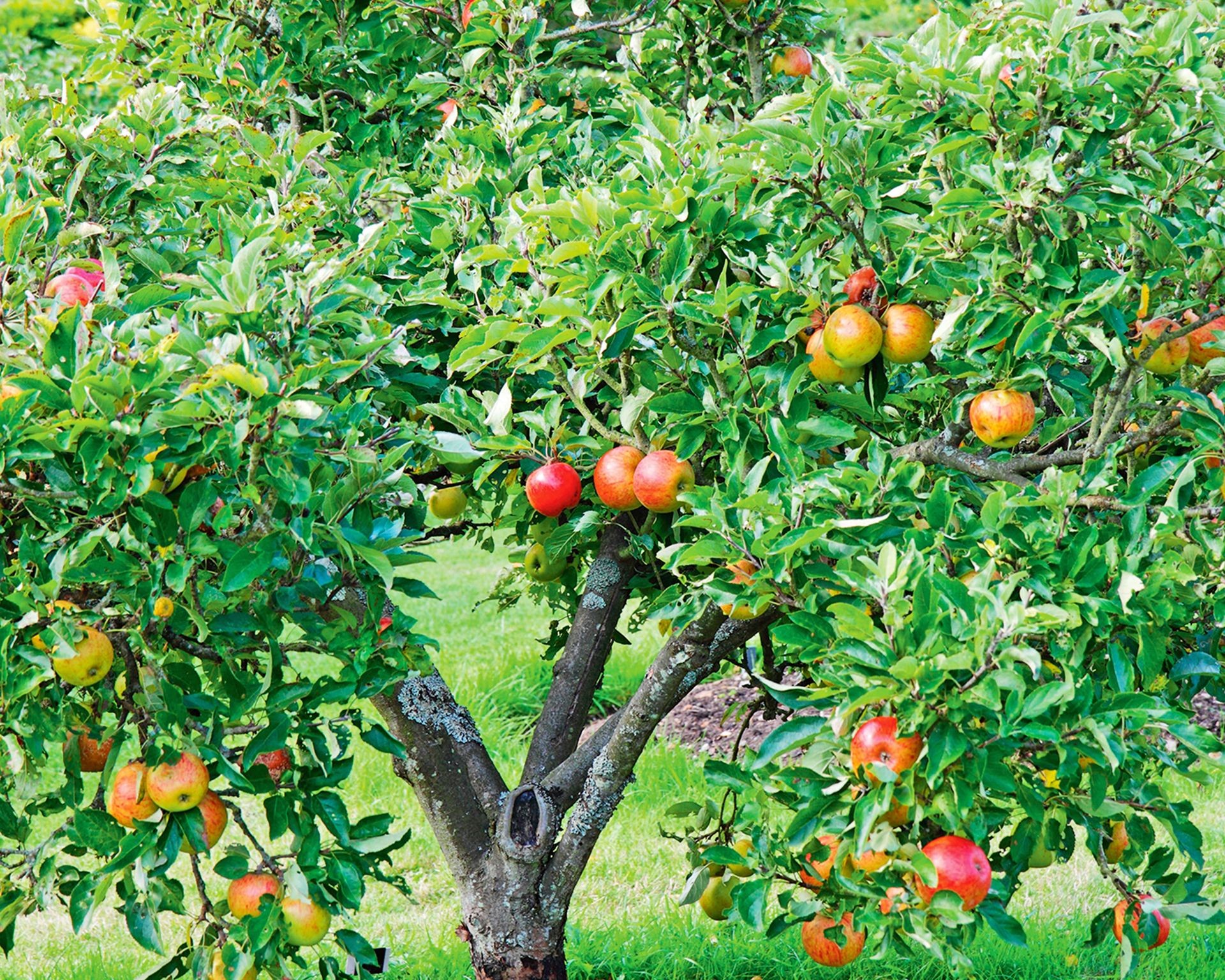 Apple tree branches heavy with ripening red apples
Apple tree branches heavy with ripening red apples
Apple trees are a favored choice for many gardeners, offering a wide selection of varieties suited for various climates, typically hardy from USDA zones 3 to 8. Their adaptability makes them a versatile addition to a front yard.
You can find dwarf or semi-dwarf options that remain much smaller than standard trees. Training techniques like espaliering or using cordons can further restrict size and add an ornamental element. Columnar varieties are particularly space-saving, often reaching only 12-15 feet (3.7-4.6m) tall. The springtime blooms are not only beautiful but also attract pollinators, leading to the development of small fruits that mature into shades of green, gold, or red, adding seasonal interest.
For optimal health, it’s advisable to fertilize apple trees in the fall after they have lost their leaves and apply a dormant spray in the spring to help manage insect pests. Maintaining consistent, moderate soil moisture is also beneficial for apple trees.
Plum Trees: Naturally Compact Beauties
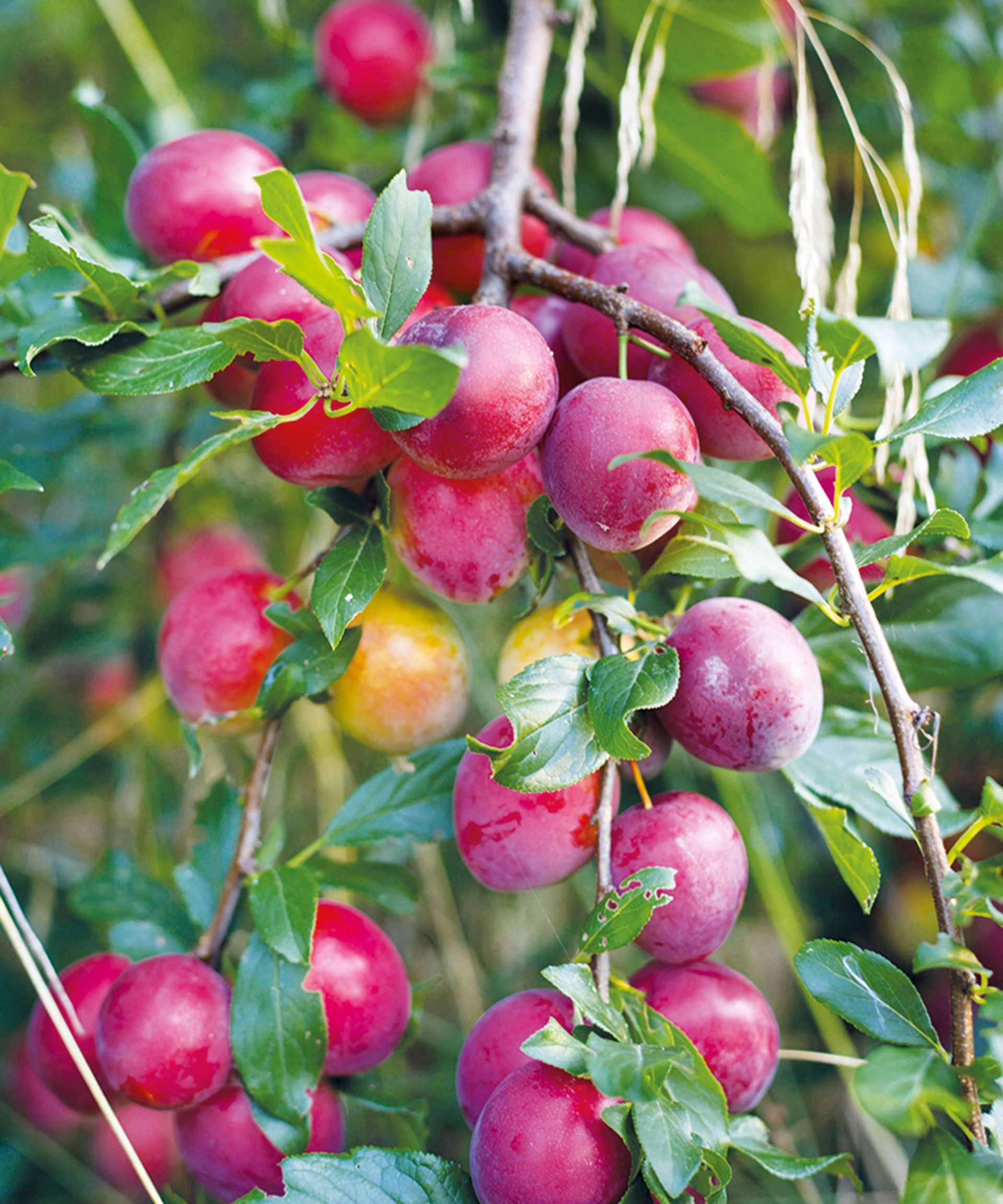 Close-up of purple Victoria plums hanging from a branch
Close-up of purple Victoria plums hanging from a branch
Plum trees are naturally smaller fruit-bearing plants, making many varieties suitable for front yards. While some can reach up to 16 feet (5m), their size is readily managed through annual pruning. Selecting a self-fruitful variety simplifies planting, as it doesn’t require a second tree for pollination.
Most plum varieties are hardy in USDA zones 4 through 9. They require consistent watering, roughly 1 inch (2.5cm) per week, especially during dry periods. Pruning is best done annually when the tree is dormant and leafless to maintain shape and size. Generally, plums are low-maintenance trees that offer lovely spring blooms followed by colorful, delicious fruit.
Cherry Trees: Dwarf Varieties for Sweet Rewards
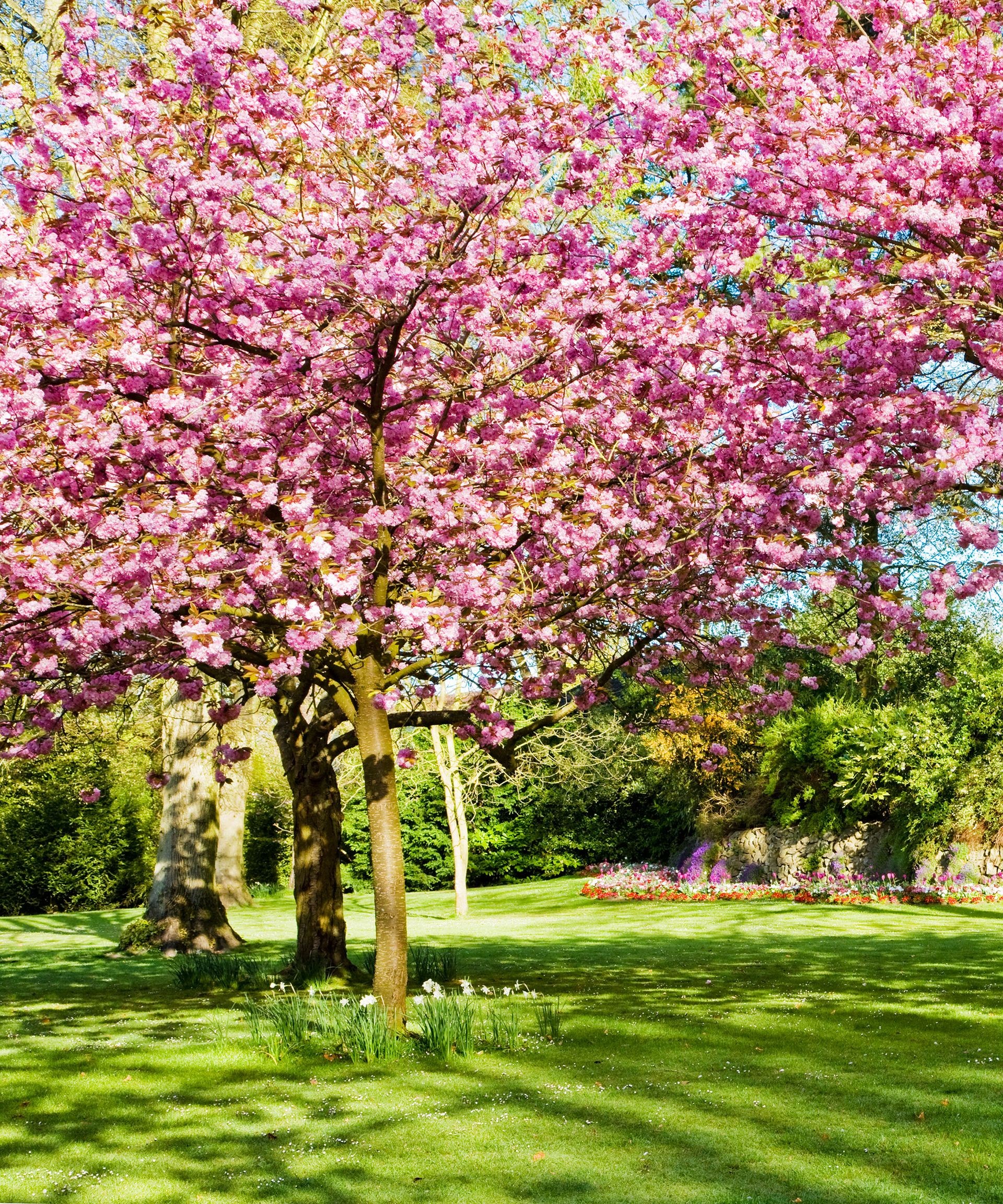 Abundant pink cherry blossoms covering branches in spring
Abundant pink cherry blossoms covering branches in spring
While some cherry tree types can grow quite large, there are many dwarf cherry varieties available that are perfect for smaller spaces like a front yard. These offer the beauty of spring blossoms and the delight of fresh cherries in a more compact form.
A notable option is the Combination Dwarf Cherry, which is grafted to produce multiple cherry varieties (often four) on a single rootstock. This tree typically grows to only about 10 feet (3m) tall at maturity and yields both early and late-season fruits in red and yellow hues. It is a self-fruitful variety and is generally hardy in USDA zone 5.
Once established, watering cherry trees deeply every one to two weeks is usually sufficient. Minimal pruning is needed, primarily focused on removing any dead or damaged branches to maintain the tree’s health and structure.
Fig Trees: Bushy Charm and Sweet Fruit
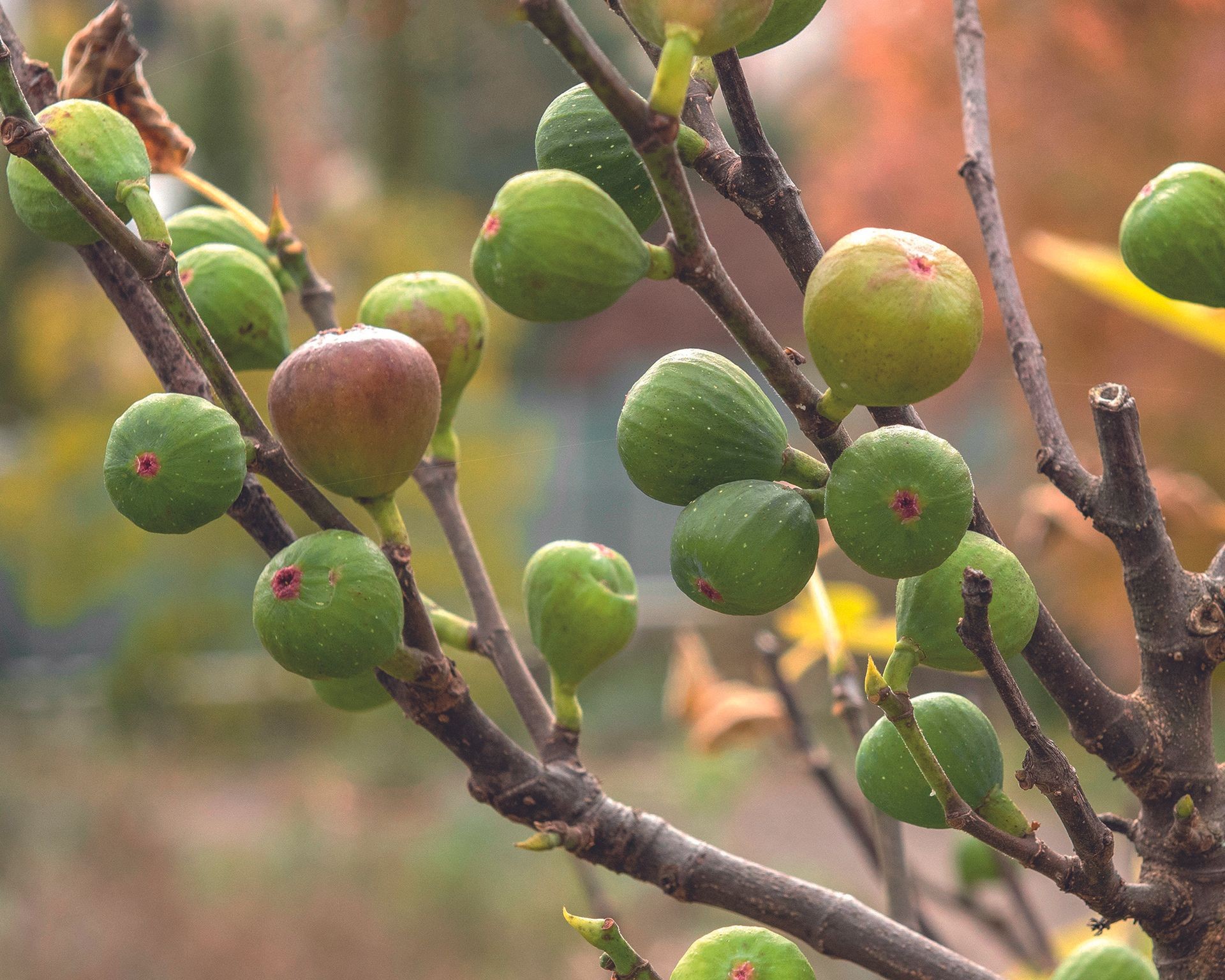 Several green figs growing on a leafy branch
Several green figs growing on a leafy branch
Fig trees can reach heights of up to 15 feet (4.6m), but their size is easily managed through regular pruning. Compact varieties, like the aptly named ‘Compact’ fig, stay much smaller, sometimes only reaching 3 feet (90cm) tall. Fig trees tend to have a bushy growth habit, often spreading as wide as they are tall.
Figs usually begin producing fruit within 3-5 years after planting. Most commonly grown varieties are hardy in USDA zones 8 through 10, although some newer developments have extended hardiness into zones 5-7. Pruning fig trees during their winter dormancy helps maintain an open structure and removes dead wood. Keep the soil moderately moist and provide a low-nitrogen fertilizer in early spring to support healthy growth and fruiting.
Pear Trees: Manageable Size with Delicious Results
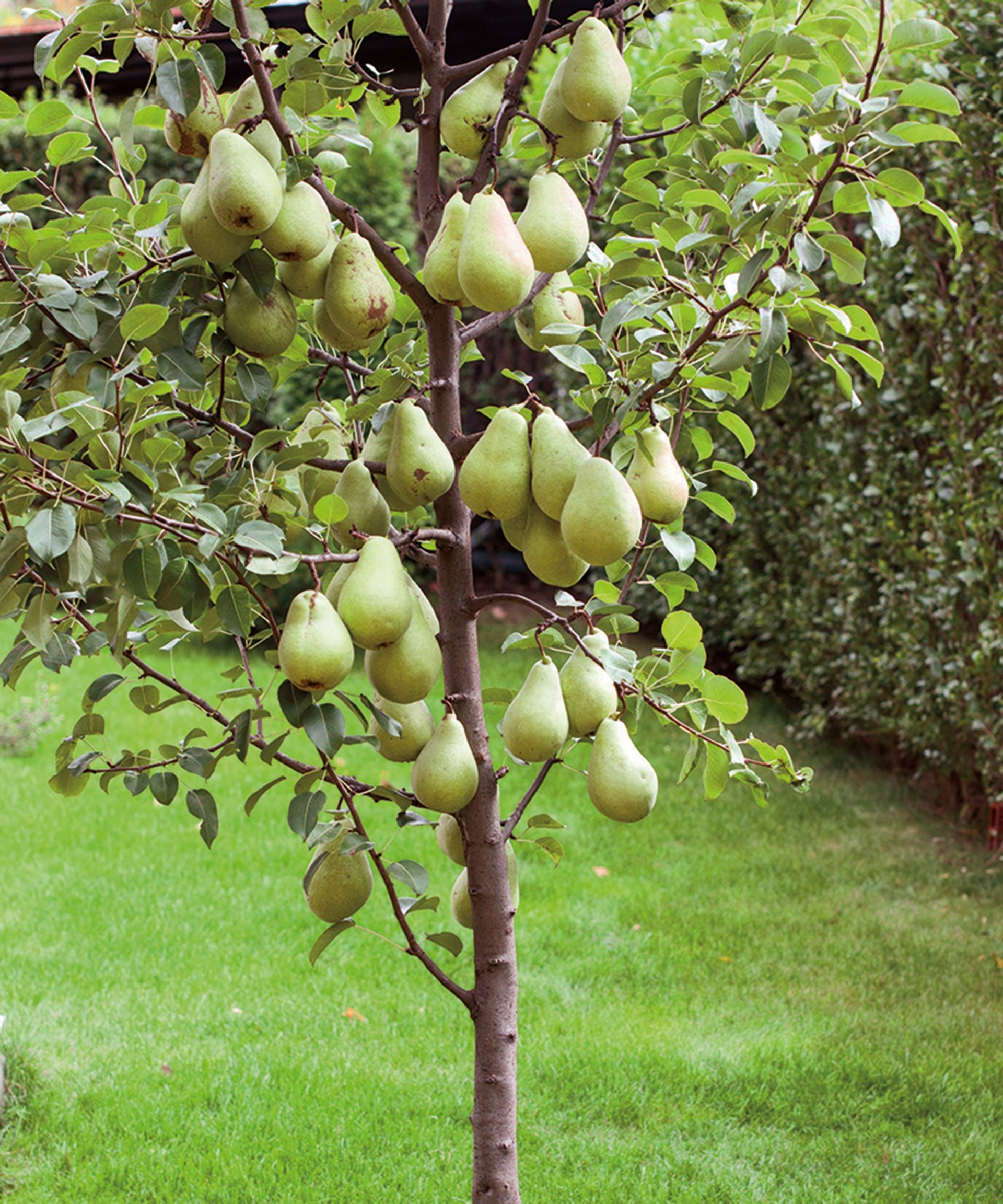 Small pear tree in a garden loaded with ripe green pears
Small pear tree in a garden loaded with ripe green pears
Dwarf pear trees are an excellent choice for front yards, typically growing to about 8 feet (2.4m) tall. Popular dwarf varieties such as ‘Comice’ and ‘Bartlett’ are readily available and are often self-fruitful, meaning a single tree can produce fruit. However, many other dwarf pear varieties are not self-fruitful and require a second pear tree nearby for cross-pollination to ensure fruit production.
When pear trees are young, it’s beneficial to prune them to establish a strong central leader branch. Watering needs are moderate; once or twice a week is usually sufficient, just enough to keep the soil cool and slightly damp. Most pear varieties thrive in USDA zone 5, with some cultivars extending hardiness into zone 3, offering options for colder climates.
Crabapple Trees: Ornamental Appeal and Tart Delights
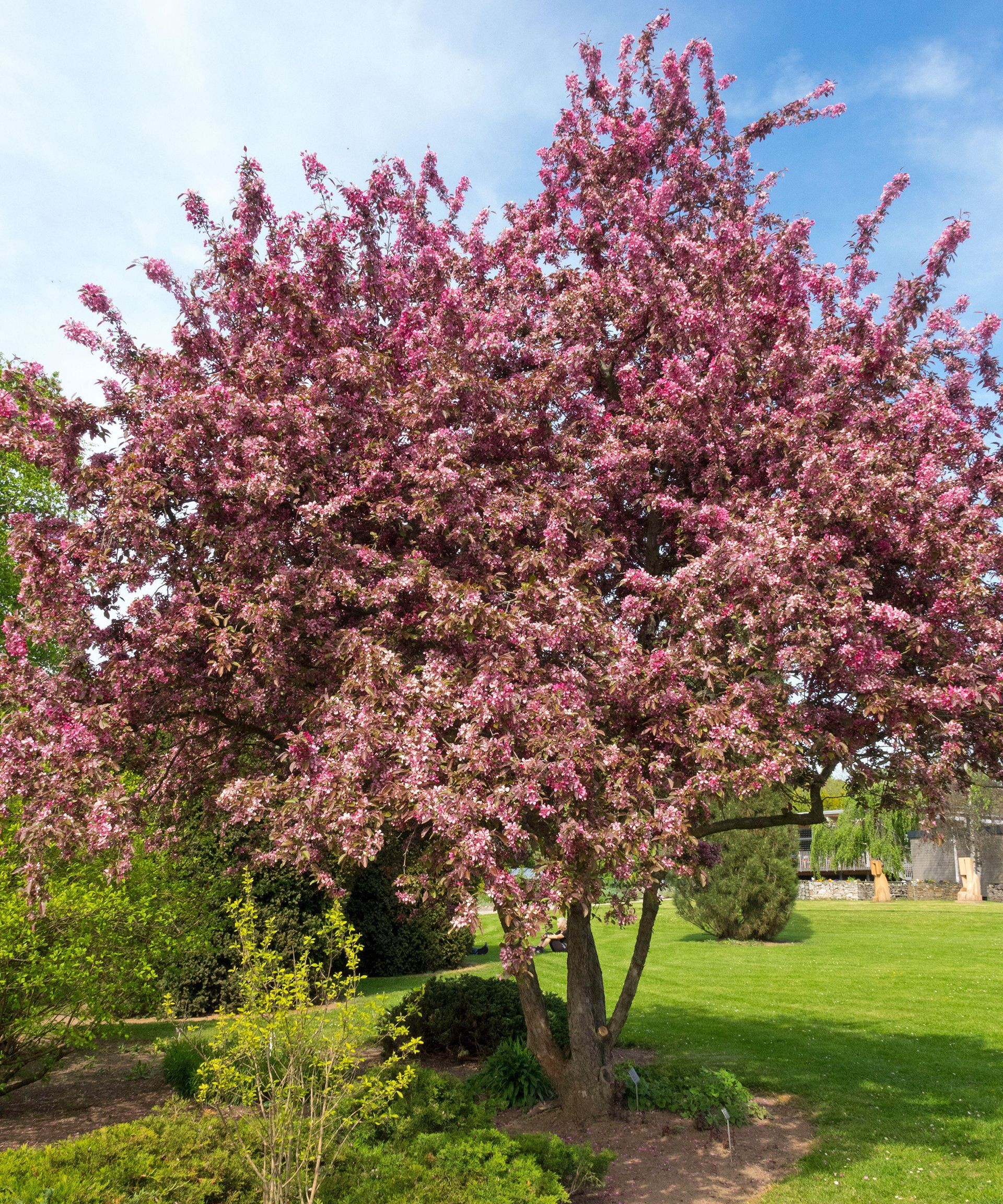 A vibrant crabapple tree covered in delicate pink blossoms
A vibrant crabapple tree covered in delicate pink blossoms
Crabapple trees are primarily grown for their ornamental qualities, offering beautiful spring blossoms and lovely, small, tart red fruits. Many dwarf crabapple varieties feature an attractive weeping form, and their soft pastel flowers are a delightful sight in spring.
During the establishment phase after planting, watering the trees once or twice weekly is recommended. Once mature, they become quite drought-tolerant and can go for longer periods without supplemental water, except during the hottest summer weather.
These resilient plants are typically hardy in USDA zones 4 through 9 and reach a manageable size of around 8 feet (2.4m) tall and 5 feet (1.5m) wide. An added benefit of crabapple trees is their ability to serve as pollinators for apple varieties that require a cross-pollinating partner, making them a functional and beautiful addition to a front yard with other apple trees nearby.
Banana Trees: A Tropical Touch for Warmer Zones
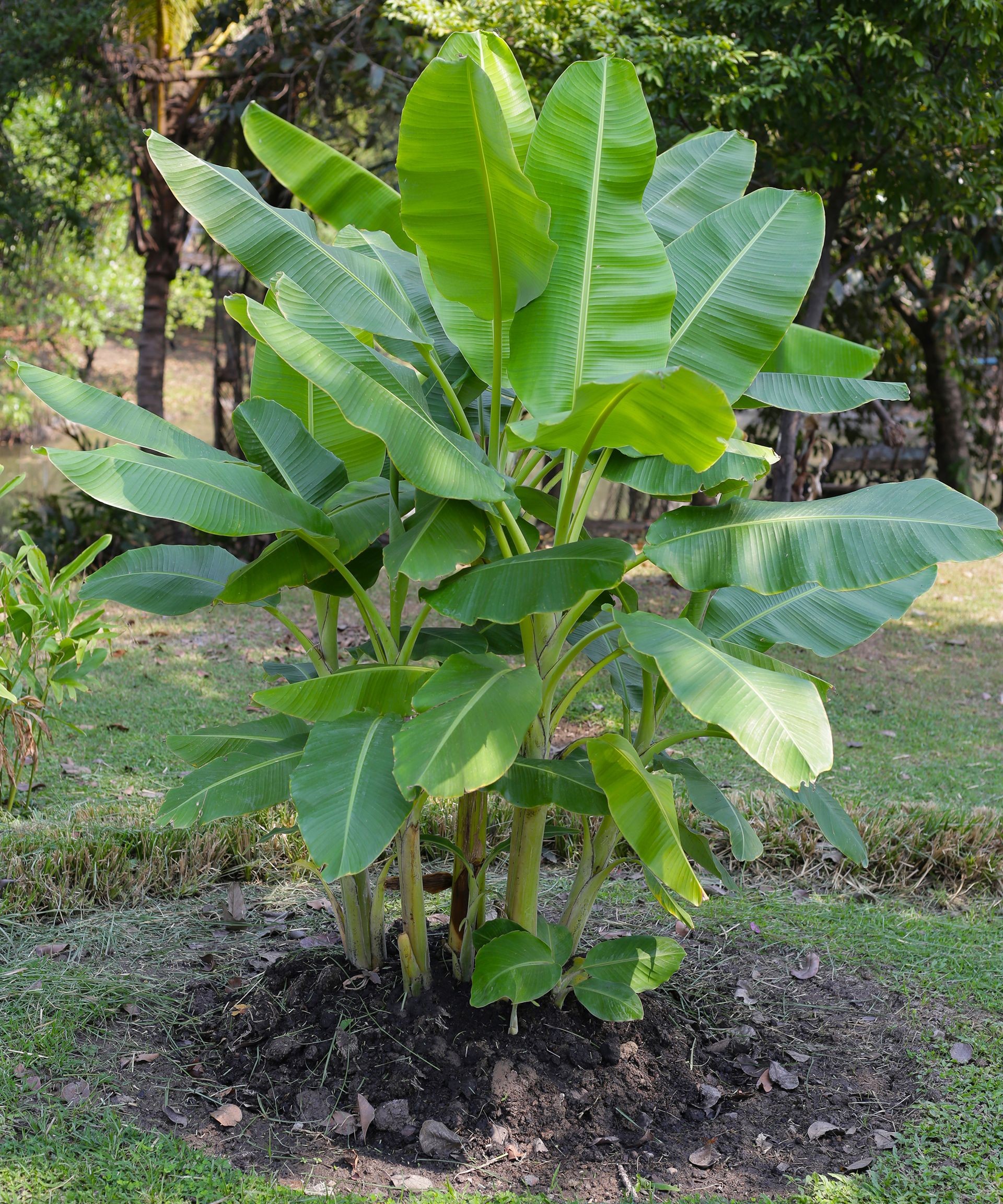 Compact banana plant growing in a landscaped area
Compact banana plant growing in a landscaped area
For gardeners in warmer climates, the idea of incorporating a tropical plant like a banana tree into the front yard landscape is very appealing. Dwarf banana tree varieties make this possible, with some staying as small as 2 feet (60cm) tall with a spread of just 1 foot (35cm).
Banana trees are only hardy in USDA zones 8 through 11. However, they thrive exceptionally well in containers, which allows gardeners in colder regions to enjoy them by overwintering the plants indoors, protecting them from frost.
Pruning should be done in spring or summer to encourage flowering and subsequent fruiting. Banana trees are thirsty plants; water them generously a few times per week. Applying a slow-release fertilizer twice a year helps provide the nutrients they need for vigorous growth and fruit production.
Choosing the right smaller fruit tree can significantly enhance your front yard’s beauty and provide the joy of harvesting your own fruit. From apples and plums to figs and even bananas, there’s a variety suited for many locations and garden styles. Carefully consider size, hardiness, and care requirements to select the perfect tree for your space. Explore the possibilities and start planning your edible landscape today with products from Biogarden.asia.



